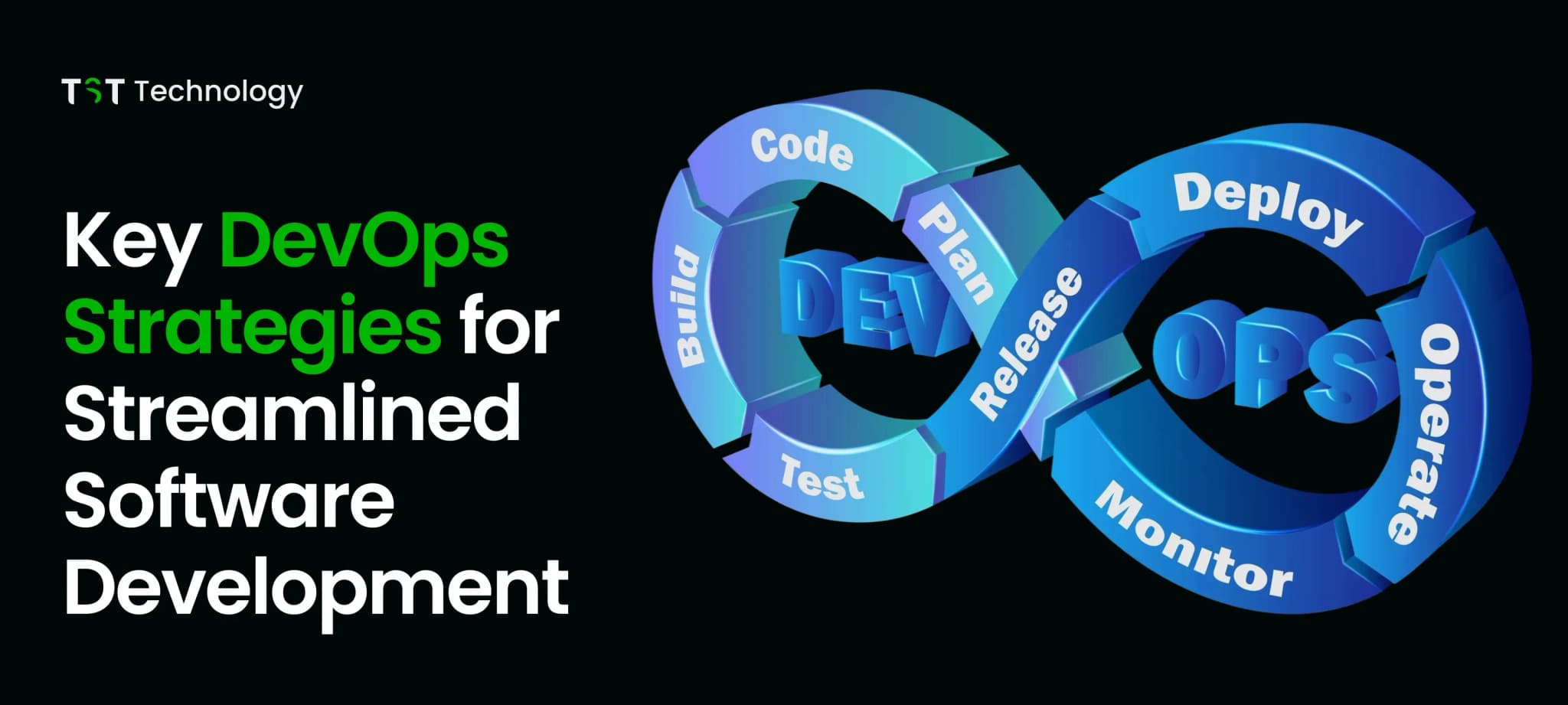Did you know that 58% of organizations have significantly improved software quality with DevOps?
It’s the key to delivering updates quickly while maintaining top-notch quality by advancing teamwork, automating tasks, and accelerating software delivery.
A DevOps strategy roadmap breaks down barriers between developers and operations, focusing on collaboration, automation, and continuous improvement for efficient software delivery.
Let’s start this journey!
What is DevOps Strategy?
A DevOps strategy automates processes like code integration and deployment, improving efficiency and reducing errors. It speeds up delivery while maintaining quality.
It also encourages team collaboration, continuous feedback, and data-driven decisions. DevOps promotes constant improvement and responsibility throughout the software lifecycle.
8 Proven DevOps Strategies to Transform Your Team's Efficiency

DevOps automates development, testing, and deployment processes, improving collaboration, productivity, and software delivery speed.
Let’s explore key DevOps strategies and how they can help organizations succeed.
1. Infrastructure as Code (IaC)
- IaC is a method for automating IT infrastructure. It helps manage provisioning, configuration, and changes to maintain stability. Terraform and Ansible are widely utilized to automate infrastructure management and configuration tasks.
2. Microservices Architecture
- Instead of one large app, microservices break down applications into smaller services, making them easier to manage and update without disrupting other services. It speeds up development and maintenance.
3. Container Management System
- Containerization (using tools like Docker and Kubernetes) allows applications to run consistently across different environments, improving scalability and efficiency.
4. DevSecOps
- Integrating security into the DevOps process (DevSecOps) ensures security is built into every development step, not added at the end. It helps prevent vulnerabilities and improve safety.
5. Continuous Integration (CI)
- CI automates code integration, ensuring faster and smoother merging of new code. It detects issues early, making fixing bugs and maintaining high-quality code easier.
6. Continuous Delivery (CD)
- CD automates the process of pushing new code to production. This ensures faster releases with minimal manual work, improving delivery speed and reducing errors.
7. Test Automation Strategy
- Automating tests helps save time and ensures the code behaves as intended. It detects errors early in the development process, speeding up feedback cycles and improving product quality.
8. Rapid Feedback
- DevOps focuses on fast feedback between teams to quickly detect and fix issues. Continuous testing and integration help developers resolve problems swiftly, leading to faster product delivery.
DevOps is about working together, automating tasks, and always improving. By integrating these strategies into your workflow, you can enhance your development and deployment processes, improve software quality, and reduce the time it takes to deliver new features.
The Role of Automation in Effective DevOps Strategies
Organizations meet the demand for faster, reliable software through automation in DevOps. It reduces manual work, minimizes errors, and speeds up development, allowing teams to focus on innovation.
Automation also improves collaboration by standardizing workflows and breaking down barriers between teams, ensuring smooth and secure application deployment.
- Repetitive tasks are automated, saving time and effort.
- Continuous integration ensures smooth code updates without conflicts.
- Automated testing catches issues early, improving quality.
- Infrastructure as Code simplifies setup and scaling processes.
- Deployment pipelines become faster and safer with automation.
- Teams collaborate better, working towards shared goals.
- Quick updates and reliable systems enhance user satisfaction.
By integrating automation into DevOps, organizations can achieve rapid software delivery without compromising on quality, making it easier to stay competitive in today’s market.
How Companies Benefit from DevOps Automation Strategies

DevOps automation offers numerous advantages that streamline processes, improve efficiency, and enhance collaboration. Here’s how companies can benefit:
- Faster Delivery Cycles: Automation speeds up tasks like testing, integration, and deployment, enabling quick software releases.
- Improved Quality: Automated testing and processes reduce human errors, ensuring consistent and reliable results.
- Enhanced Collaboration: Automation breaks down barriers between teams, promoting better communication and teamwork.
- Scalability: Companies can handle larger projects and growing demands without increasing manual effort.
- Increased Productivity: Teams save time on repetitive tasks and can focus on innovation and strategic goals.
- Reduced Complexity: Automation simplifies workflows and minimizes errors, making processes more manageable.
- Faster Recovery: Automated monitoring and responses help teams quickly recover from incidents or outages.
- Cost Efficiency: Automation reduces time and resource waste, lowering operational costs.
- Customer Satisfaction: Quick updates, reliable systems, and user-focused improvements lead to happier customers.
- Faster Support Resolution: DevOps reduces support case handling time by 60%, freeing up teams for innovation and better customer experience.
Embracing DevOps automation helps companies stay competitive, deliver faster, and enhance teamwork for a seamless experience.
Want to use these benefits for your business? Explore our DevOps services to see how we can help streamline your processes and drive efficiency.
Conclusion
A strong DevOps strategy ensures faster, reliable software delivery, automates tasks, and ensures quality. With 77% of organizations using or planning to adopt DevOps, it helps companies stay competitive and meet customer demands.
Ready to enhance your development process with a strong DevOps strategy? Contact Us to get started!
Stay tuned for more insights – see you again soon!






